Application of screw press combined with plate and frame filter press in dewatering of printing and dyeing sludge
Sewage treatment will produce a large amount of sludge, which contains a large amount of organic matter, bacteria, pathogenic microorganisms, etc. If it cannot be treated effectively, it will cause secondary water and atmosphere pollution. This article will mainly introduce the application and operation process of screw press combined with plate and frame filter press in printing and dyeing sewage treatment.
The treatment of printing and dyeing sludge has always been a difficult problem for textile printing and dyeing enterprises. The treatment and disposal of printing and dyeing sludge is costly, and the pressure on environmental protection is great. In order to overcome the problem of low processing efficiency of the plate and frame filter press, a screw press is added before the plate and frame filter press for pretreatment to dehydrate the printing and dyeing sludge, which not only ensures the continuous operation of sludge dehydration but also increases the sludge treatment capacity. It also ensures that the moisture content of the sludge after dehydration is around 65%.
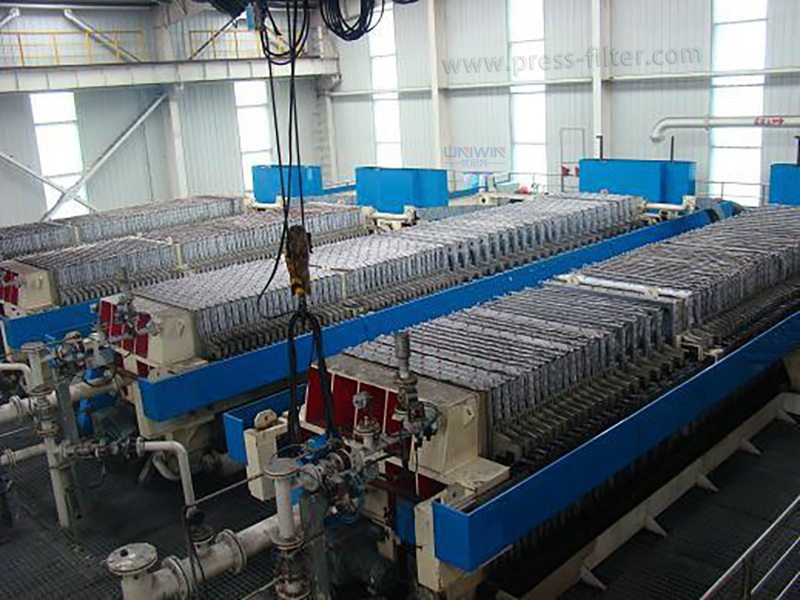
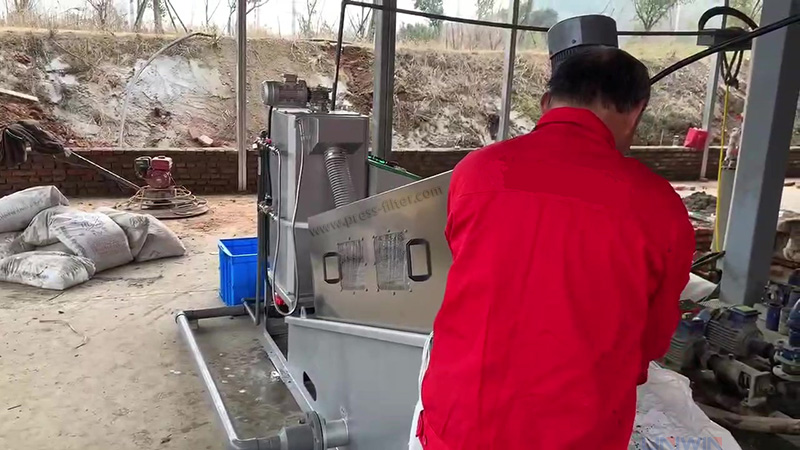
Overview of printing and dyeing sludge dewatering
After the printing and dyeing, sludge is concentrated in the concentration tank, and it is transported to the flocculation mixing tank through the sludge pump. Then, a certain proportion of poly aluminum chloride (PAC) solution and polyacrylamide (PAM) solution is added to the sludge for flocculation. Afterward, the initial dehydration is carried out through the screw press, and the volume and moisture content of the sludge is reduced to a certain extent. The sludge from the screw press is temporarily stored in the sludge transfer tank. Then, the plate and frame filter press is carried out, and the sludge from the plate and frame filter press is transported to the sludge hopper through the belt conveyor. After the screw press dewaters the sludge and the plate and frame filter press in sequence, the moisture content and volume are greatly reduced, which reduces the transportation and disposal costs of the dried sludge.
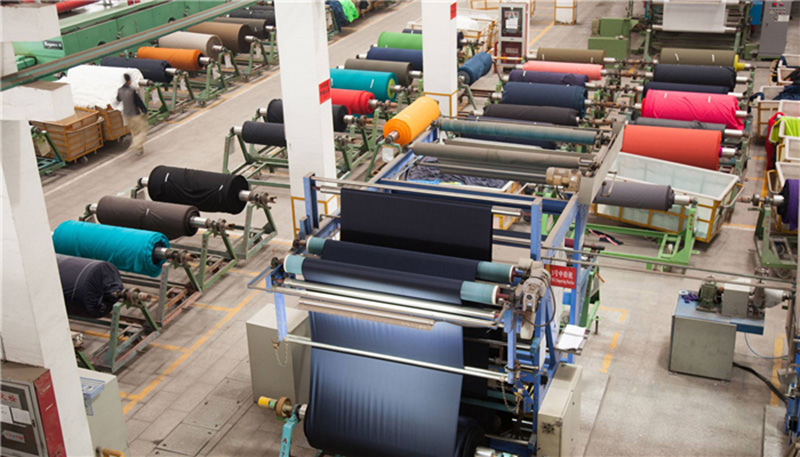
Operation of sludge dewatering system
1. Sludge Conditioning
The moisture content of the sludge after initial concentration in the sludge thickening tank is 97.4% to 98.0%. PAC solution and PAM solution are sequentially added to the concentrated sludge for chemical conditioning, and the conditioned sludge particles are flocculent and easy to separate mud and water.
2. Operation of screw press
The conditioned sludge is preliminarily dehydrated through the screw press, and the sludge particles are separated from the filtrate. The filtrate is transparent and clear, and the sludge particles are few. Since the screw press is only used as the pretreatment of the plate and frame filter press, the sludge is initially dehydrated, which reduces the moisture content and volume of the sludge to a certain extent, and the moisture content of the sludge can be 93% to 96%. Pay attention to maintaining a certain fluidity in the sludge discharged from the screw press, which is convenient for plate and frame filter press.
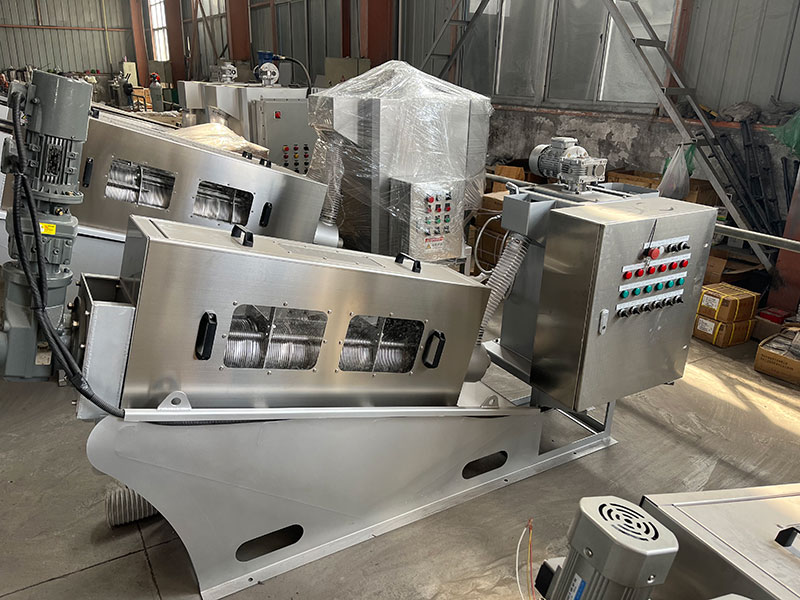
3. Operation of plate and frame filter press
After the sludge is deeply dehydrated by the plate and frame filter press, the moisture content is about 65%.
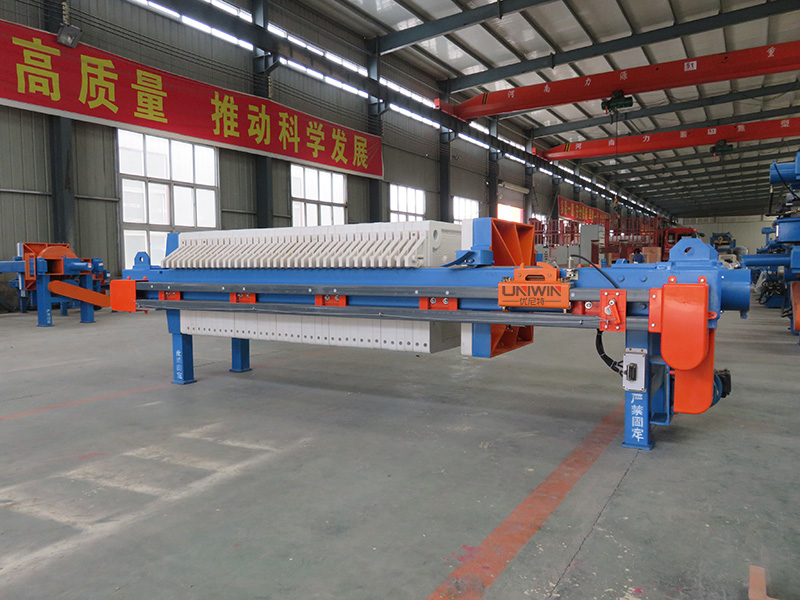
Conclusion
The printing and dyeing sludge is dewatered by using a screw press combined with a plate and frame filter press, which combines the advantages of the continuous operation of the screw press and the low moisture content of the sludge produced by the plate and frame filter press. The moisture content of the sludge reaches 65%, the sludge treatment capacity has been significantly improved, and the operation is stable and reliable. It can significantly reduce the transportation and disposal costs of dry sludge and provides important technical references for the design, transformation, and operation of printing and dyeing sludge dewatering projects.

